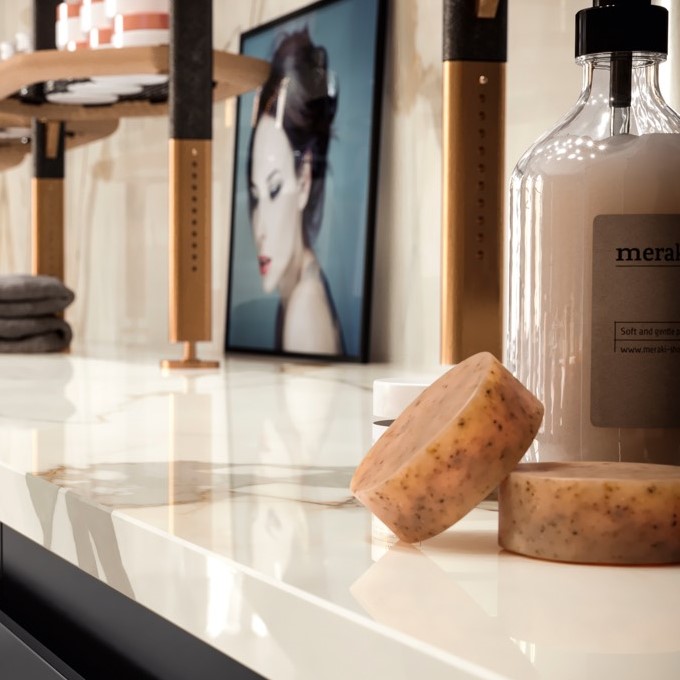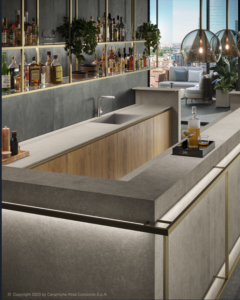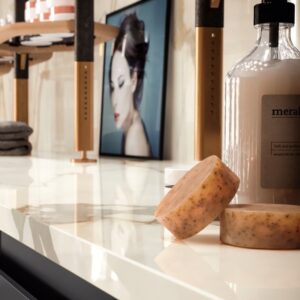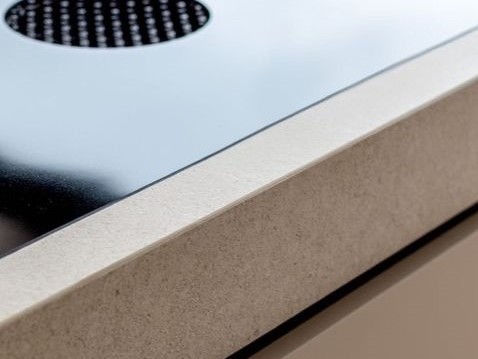

Porcelain slabs are a clay-based material, which means that the intricate patterns from natural stones such as marble, can be mimicked through digital printing upon the surface of the slab.
They have gained popularity in the construction and design industry due to their aesthetic appeal, durability, and versatility in various applications. They offer a modern and sophisticated look while providing practical benefits for both residential and commercial spaces.
Is Porcelain full-bodied?
Characteristics
In terms of characteristics, porcelain is a type of ceramic material known for specific attributes, making it a popular choice for various applications. Here are some key characteristics of porcelain:
1) Durability:
A hard and durable material, making it resistant to scratches, dents, and chipping. This characteristic contributes to its suitability for high-traffic areas and applications where durability is essential.
2) Heat Resistant:
It can withstand high temperatures, making it suitable for use in environments with heat, such as around stovetops or in outdoor applications. It is commonly used for kitchen countertops and outdoor paving.
3) Low Porosity:
Porcelain is a low-porosity material, meaning it has a very low water absorption rate. This makes it resistant to stains and easy to clean. Porcelain is often used in areas where moisture and spills are common, such as kitchens and bathrooms.
Technology
The technology behind porcelain involves a combination of materials, processing techniques, and firing methods. Porcelain is a type of ceramic material that is characterized by its hardness, strength, and translucence.
Porcelain technologies have evolved over the centuries, incorporating advancements that enhance the material’s quality, appearance, and versatility. The resulting product is a durable, aesthetically pleasing ceramic material suitable for a wide range of applications in construction and design.
Can Porcelain slabs be full-bodied?
In answer to the question ‘Does Porcelain go all the way through?’ the answer would be no, it doesn’t. This is due to the veining and patterns being digitally printed on the top of the slab, whilst the edges are colour matched to the background.
However, new technologies such as Atlas Plan Natura-body and Atlas Plan Natura-veining, have allowed for new possibilities regarding the design potential of porcelain.
Atlas Plan Natura-body technology:
This technology is used for full-bodied porcelain slabs to recreate natural stones such as Limestone. The product is composed of the same material throughout and thus creates a look of the same material and pattern running through. This technique can only be applied to 12mm and 20mm slabs.
Here is an example of Natura-body technology – (Atlas Plan Boost Mineral Grey)

Atlas Plan Natura-vein technology:
This technology is used to re-create the veining of natural materials such as marble. Using this technique allows for the veining to follow the surface pattern and run down the side of the edges. This ultimately gives Designers more scope and flexibility because the material appears far more authentic. This can only be applied to 20mm slabs.
Here is an example of Natura-vein technology – (Atlas Plan Calacatta Imperiale)

Mitering:
Mitering is also another technique that can be used to create the look that the porcelain is going all the way through. This technique involves cutting the edges of the slabs on an angle and then joining them up.
All of these technologies and processes are design dependent, meaning that which technique is used depends on what look is desired.
In summary, whilst the initial answer to ‘Does Porcelain go all the way through?’ is no, there are now new technologies that achieve the same appearance of the patterns and veining running throughout the material.
It’s important to remember that new technologies and innovations are constantly being developed, so that design possibilities can be created and exceeded.
Latest news and blog articles
23.03.2022
Atlas Plan at KBB 2022
28.01.2022

